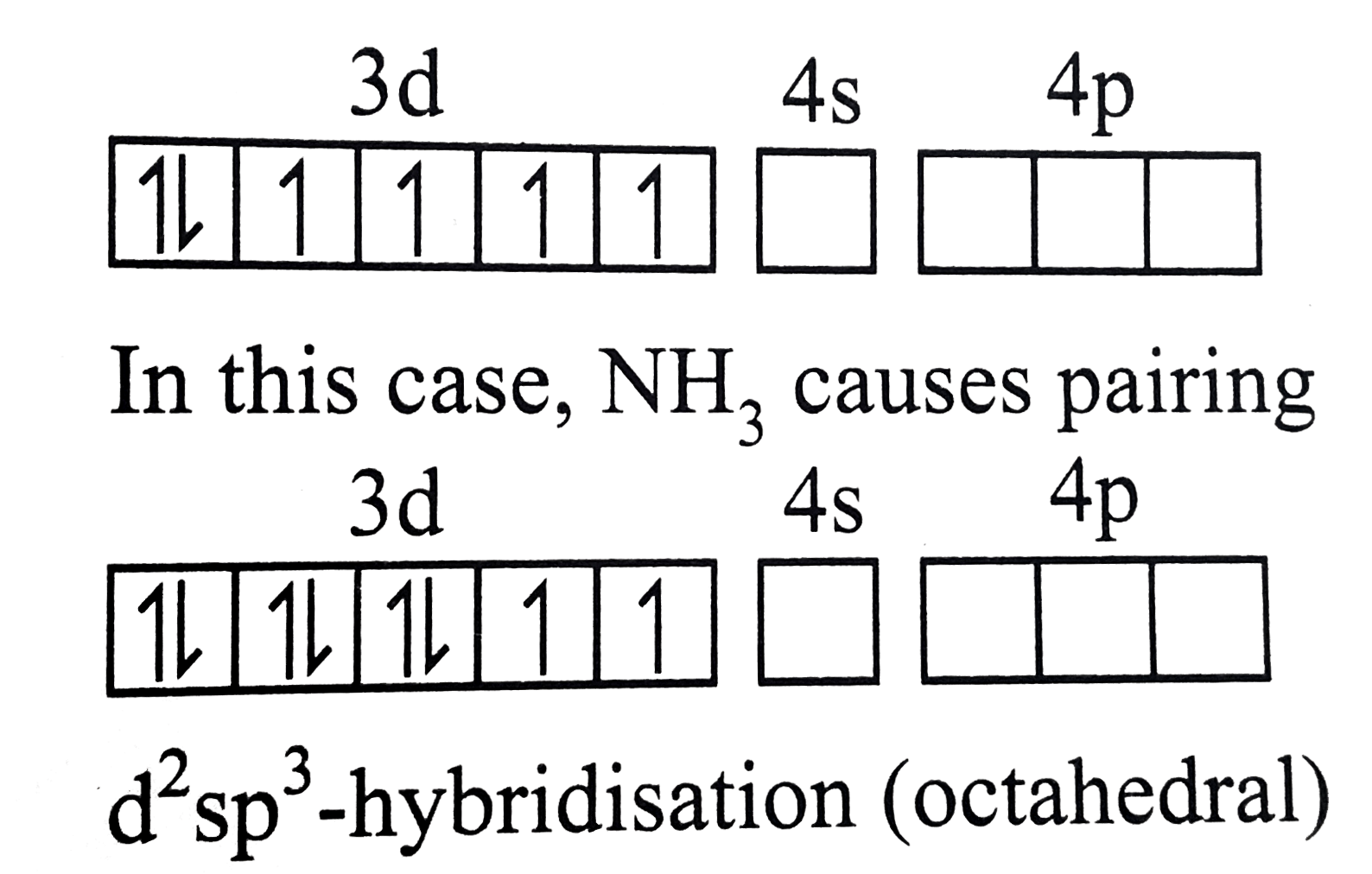Draw the structures of [Co(NH3)6]3+,[Ni(CN)4]2− and [Ni(CO)4] Write the hybridisation of atomic orbitals of the transition metal in each case .
Video Solution
Text Solution
[Co(NH3)6]?3+
The oxidation number of Co is +3 Atomic number =27
Co=[Ar]3d74s2
Co=[Ar]3d64s0
In this case NH3 cause pairing
d2sp3 hubridisation (octahedral) There are no unpaired electrons, so the complex is diamagnetic Spin magnetic moment = zero
(ii) [Ni(CN)4]2−
The oxidation nuber of Niis+2
Atomic number =28
Ni=[Ar]3d84s2
Ni2+=[Ar]3d8
Cyano is a strong filed ligand it causes pairing
dsp2-hybrisation (square planar) There are no unpaired electrons so the complex is diamgentic Spin magnetic magnetic moment =zero
(iii) [Ni(CO)4]
THe oxidation number of Ni is 0 Atomic number =28
Ni=[Ar]3d84s2
CO is a strong field ligand it cause pairing
sp3 hybridisation (tetrahedral) There are no unpaired electrons, so the complex is diamagnetic Spin magnetic moment = zero .



|
Updated on:21/07/2023
Topper's Solved these Questions
- BOOK - CENGAGE CHEMISTRYCHAPTER - COORDINATION COMPOUNDSEXERCISE - Archives True/False1videos
COORDINATION COMPOUNDS
- BOOK - CENGAGE CHEMISTRYCHAPTER - CHEMICAL KINETICSEXERCISE - Archives Subjective23videos
CHEMICAL KINETICS
- BOOK - CENGAGE CHEMISTRYCHAPTER - D AND F BLOCK ELEMENTSEXERCISE - Archives Subjective29videos
D AND F BLOCK ELEMENTS
Similar Questions
Draw the structures of [Co(NH3)6]3+[Ni(CN)4]2− and [Ni(CO)4] Write the hybridization of atomic orbitals of the transition metal in each case.
View SolutionDraw the structures of [Co(NH3)6]3+[Ni(CN)4]2− and [Ni(CO)4] Write the hybridization of atomic orbitals of the transition metal in each case.
View Solution
Knowledge Check
- Question 1 - Select One
[Ni(CN)4]2− and [Ni(CO)4] have
Asp3 hybridised Ni in both casesBsp3 and sp(3)d hybridised NiCdsp2 and sp3 hybridised NiDdsp2 hybridised Ni in both cases . - Question 2 - Select One
Amongst Ni(CO)4,[Ni(CN)4]2− and [NiCl4]2−
ANi(CO)4and|NiCl4|2− are diamagnetic and ∣∣Ni(CN)4∣∣2− is paramagneticBNi(CN)4and|NiCl4|2− are diamagnetic and Ni(CN)4 is paramagneticCNi(CO)4and∣∣Ni(CN)4∣∣2− are diamagnetic and |NiCl4|2− paramagneticD|NiCl4|2−and∣Ni(CN)2−4 are diamagnetic and Ni(CO)4 is paramagnetic. - Question 3 - Select One
Amongst Ni(CO)4,[Ni(CN)4]2− and [NiCl4]2−
ANi(CO)4and[Ni(CN)4]2− are diamagnetic and [Ni(CN)4]2− is paramagneticB[NiCl4]2−and[Ni(CN)4]2− are diamagnetic and Ni(CO)4 is paramagneticCNi(CO)4and[Ni(CN)4]2− are diamagnetic and [NiCl4]2− is paramagneticDNi(CO)4 is diamagnetic and [NiCl4]2− and [Ni(CN)4]2− are paramagnetic
Draw the structures of [Co(NH3)6]3+,[Ni(CN)4]2−and[Ni(CO)4]. Write shapes of the complexes and hybridisation of atomic orbitals of the transition metal in each case.
View SolutionDraw the structure of: (i) [Ni(CO)4] (ii) [Fe(H2O)6]+3
View SolutionAmong ni(CO)4,[Ni(CN)4]2− and NiCI2−4 .
View SolutionAmongst Ni(CO)4,[Ni(CN)4]2−andNiCl2−4:
View SolutionAmong [Ni(CO)4],[Ni(CN)4]2− and [NiBr4]2− species, the hybridisation state of Ni atoms are respectively .
View Solution

